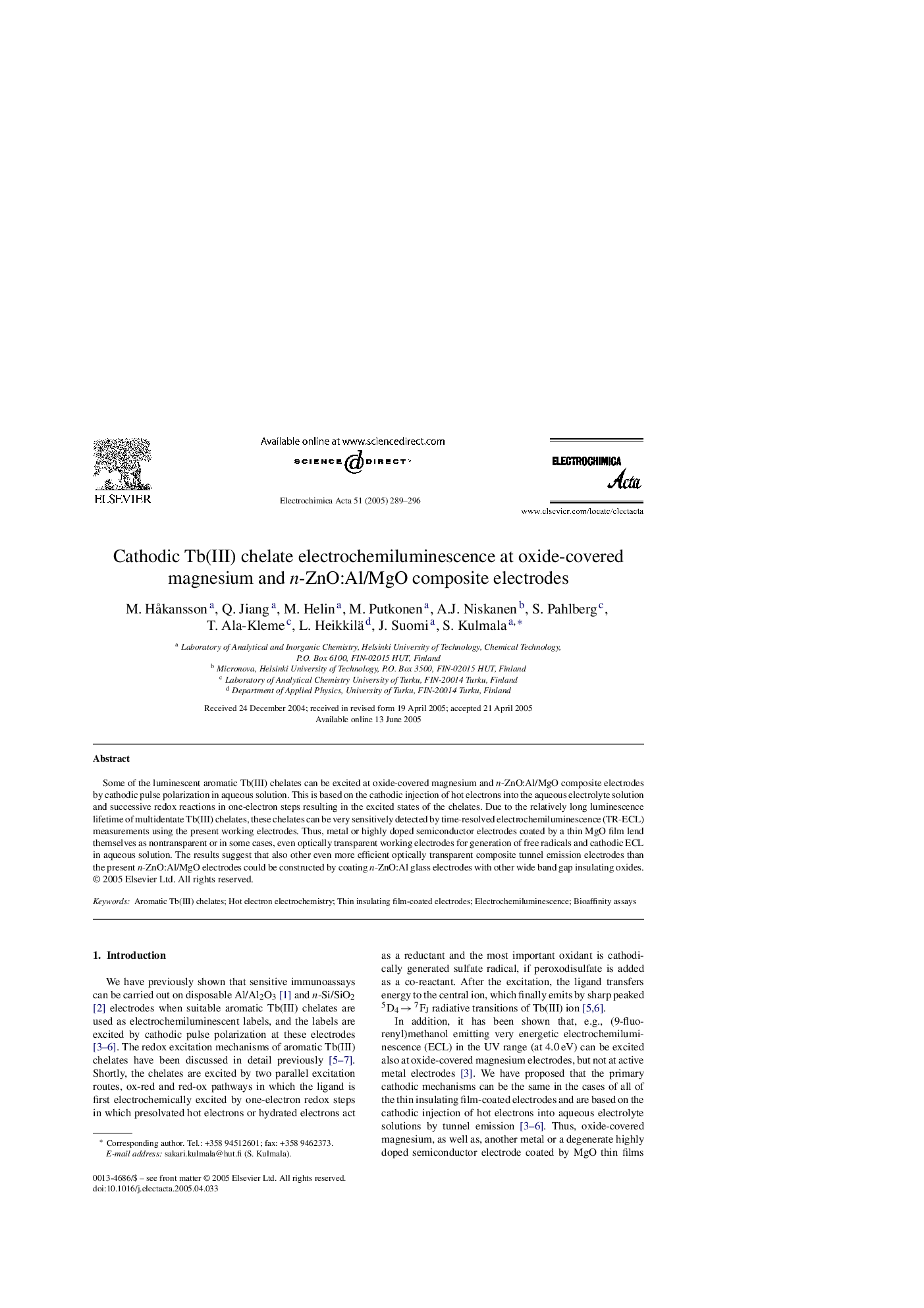| Article ID | Journal | Published Year | Pages | File Type |
|---|---|---|---|---|
| 10269342 | Electrochimica Acta | 2005 | 8 Pages |
Abstract
Some of the luminescent aromatic Tb(III) chelates can be excited at oxide-covered magnesium and n-ZnO:Al/MgO composite electrodes by cathodic pulse polarization in aqueous solution. This is based on the cathodic injection of hot electrons into the aqueous electrolyte solution and successive redox reactions in one-electron steps resulting in the excited states of the chelates. Due to the relatively long luminescence lifetime of multidentate Tb(III) chelates, these chelates can be very sensitively detected by time-resolved electrochemiluminescence (TR-ECL) measurements using the present working electrodes. Thus, metal or highly doped semiconductor electrodes coated by a thin MgO film lend themselves as nontransparent or in some cases, even optically transparent working electrodes for generation of free radicals and cathodic ECL in aqueous solution. The results suggest that also other even more efficient optically transparent composite tunnel emission electrodes than the present n-ZnO:Al/MgO electrodes could be constructed by coating n-ZnO:Al glass electrodes with other wide band gap insulating oxides.
Keywords
Related Topics
Physical Sciences and Engineering
Chemical Engineering
Chemical Engineering (General)
Authors
M. HÃ¥kansson, Q. Jiang, M. Helin, M. Putkonen, A.J. Niskanen, S. Pahlberg, T. Ala-Kleme, L. Heikkilä, J. Suomi, S. Kulmala,
